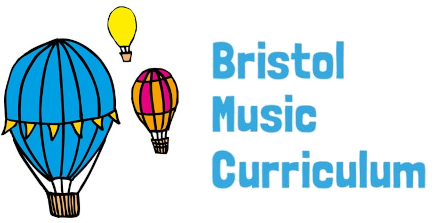Key Learning Objectives: To read and perform an extended rhythmic composition using traditional notation. I can maintain a rhythmic line and a rhythmic ostinato in an ensemble. To perform with sensitivity and with musicality. Starter activity: Rehearse each two bar rhythm using the backing tracks, focusing on correcting the reading and maintaining the pulse. Main activity: Performance […]
Category: Unit 2
Year 6, Unit 2: Samba – Lesson 6
Key Learning Objectives: To maintain a musical line within a Samba structure, recognising and responding appropriately to calls. To refine and improve a performance. Starter activity: Class exercise using a metronome set to 120 bmp. Divide the class into two groups, one group to clap on beat one of three and the other to clap […]
Year 6, Unit 2: Samba – Lesson 5
Key Learning Objectives: To maintain a rhythmic line within a Samba structure. To respond correctly to a given call. Starter activity: Class exercise using a metronome set to 120 bmp. Divide the class into two groups, one group to clap on beat one of five and the other to clap on beat one of seven. […]
Year 6, Unit 2: Samba – Lesson 4
Key Learning Objective: To recognise and perform complex rhythms and maintain a rhythmic part in canon / in a round (where one parts begins before another). Starter activity: Call and response practice, based on a teacher-led activity. The teacher to whisper the call and the pupils to echo the response rhythms. Extend the activity by dividing […]
Year 6, Unit 2: Samba – Lesson 3
Key Learning Objectives: Children are able to read and perform four basic samba rhythms in ensemble. Children are able to maintain a line in a round / canon. Children can recognise and identify samba instruments. Starter activity: Introduce Samba Batacuda as a solely percussion form of Samba. Use the provided powerpoint to view the instruments […]
Year 6, Unit 2: Samba – Lesson 2
Key Learning Objective: To echo, read and perform four basic samba rhythms in unison. Starter activity: Select rhythm flashcards six, eight, nine and ten, read and clap each card four times using a backing track to help maintain a constant pulse. Main activity: Use the recording of the basic samba rhythms as pupils echo each rhythm […]
Year 6, Unit 2: Samba – Lesson 1
Key Learning Objective: To identify features of Brazilian Carnival / Samba music. To recognise, read and perform four basic samba rhythms. Starter activity: Listening and response exercise based on the soundscape of carnival. Introduce the Brazilian rhythmical dance that is Samba. Discuss the instrumentation and the form of its structure, focusing on describing the music […]
Year 5, Unit 2: Trains – Lesson 5
Key Learning Objectives: To compose/notate a rhythm to illustrate an aspect of a train journey. To read and perform a number of notated rhythms. To maintain a rhythmic line and a rhythmic ostinato in an ensemble. Starter activity: Choose one of the pulse / rhythm games from the rhythm activity sheet. Main activities: Activity one: Revise […]
Year 5, Unit 2: Trains – Lesson 4
Key Learning Objectives: To read and perform a rhythm from musical notation. To compose lyrics within a given meter. Starter activity: Choose one of the activities from the rhythm starter bank. Main activities: Activity one:Listening and response exercise based on the work, ‘Etude Aux Chemins de Fer’ by the French composer Pierre Schaeffer. Activity two: […]
Year 5, Unit 2: Trains – Lesson 3
Key Learning Objectives: To explore more complex rhythms and to create an ostinato. To notate a rhythmic ostinato. To add lyrics to match the ostinato rhythm. Starter activity: Choose one of the activities from the rhythm starter bank. Main activities: Introduce the concept of a tone poem through watching Honnnger’s ‘Pacific 231.’ Pupils to write down words […]
